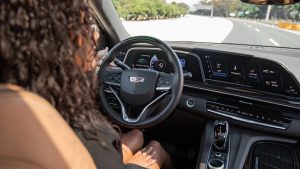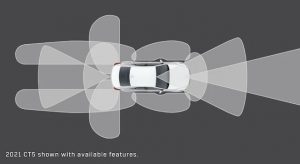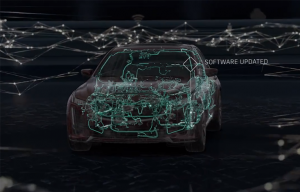Using an array of advanced sensors, video cameras, GPS systems and other data sources, hands-free driver assist technology is extending its reach to work on even more roads across Canada and the U.S.
Cars equipped with driver assist technology are not fully autonomous vehicles; while braking, throttling and steering can be implemented without input from the driver, the system still requires the attention of and interaction with the driver.
As such, these vehicles monitor not only the road on which they travel, but the person behind the wheel.

Super Cruise on the Cadillac Escalade. Photo by GM Canada.
Introduced in 2017 through General Motors, the Super Cruise driver assist platform puts leading-edge technologies in the driver’s seat of select Cadillac models, including a sophisticated driver attention system and precision Lidar sensing and mapping capabilities.
What’s called the Super Cruise Road network will double in size, the manufacturer reports, with hundreds of thousands of additional kilometres of compatible roads with visible lane markings across North America that can be driven hands-free using its system.
In Canada, the number of compatible roadways will more than triple as a result of recent expansion efforts, from about 24,000 kilometres to almost 80,000. The Trans-Canada Highway is a major enabled route, but the tech is compatible with smaller and regional divided highways, such as in Nova Scotia and Newfoundland.
The technology embedded in a Super Cruise system creates a “sensory field” around the vehicle that helps keep them in the lane and the flow of traffic.
Lidar (for Light detection and ranging) is a kind of remote sensing technology that sends, receives and reads light pulses so it can accurately measure distances. Lidar readouts — combined with other data — deliver three-dimensional information, accurate to about five centimetres, about nearby objects and their size, shape and surface characteristics.
Super Cruise can accelerate or brake the vehicle to maintain a selected gap from a vehicle ahead, it can steer the vehicle to maintain lane position, and on select models when offered, it can make driver and system-initiated lane changes to pass slower traffic and to move from a lane that may be ending.
It displays driving and status messages on a 12-inch digital instrument cluster, through other LED light signals, and via vibrations felt through the driver’s seat.
While it is providing such assistance to the driver, the system is continually monitoring the driver, too: a small camera is located on top of the steering column, and with infrared lights it can tell which direction the driver is looking by checking his or her eyes and head position in relation to the road to help ensure they are aware and in control of the vehicle.
If the driver turns away from the road ahead for too long – like when looking at a smartphone or talking to passengers – a steering wheel light bar will change from green to red to prompt the driver to par attention. Cadillac in fact warns it users to “[a]lways pay attention while driving and when using Super Cruise. Do not use a hand-held device.”

The technology embedded in a Super Cruise system creates a “sensory field” around the vehicle that helps keep them in the lane and the flow of traffic.
Along with the Driver Attention System built-in to Super Cruise, there’s a Lane Change on Demand system that, once the turn signal is activated, looks for an acceptable opening in the indicated lane and alerts other vehicles that a lane change is imminent. If the indicated lane is determined to be open, the vehicle will merge into that lane. An Automated Lane Change system enables the vehicle to automatically pass slower vehicles in the lane without the driver having to touch any controls. A special Trailering Mode recognizes when the vehicle is pulling a trailer, and it extends needed measurements and other calculations accordingly.
Of course, there are other calculations the driver must make, like cost: Super Cruise can cost upwards of $2,500 to install, and there’s a tiered monthly subscription fee that kicks in after the first three years that extends up to $50 per for a fully-featured premium service.
An eligible OnStar plan, working electrical system, wireless coverage and GPS signal requirements for Super Cruise use.
Data plans that may be offered to Super Cruise customers (costs, terms and conditions from a third-party provider apply) are used operationally, and so the manufacturer can remotely access, deliver, install, update, change or upgrade system software (such deliveries can be made “without additional notice or consent”, the manufacturer describes).
Notice and consent for the system’s privacy policy is another driver responsibility. Personal (and vehicle) information collection is a key component in keeping the system’s features and functionality up to speed, as it were.
And while the Super Cruise system is clearly described as a driver assist technology, it has benefits for passengers, too: in-vehicle HD streaming from partners like Hulu and YouTube is available.
# # #

GM’s new Vehicle Intelligence Platform, or VIP, currently used on 2020-2022 Corvette, CT4, CT5 and 2021-2022 Tahoe, Suburban, Yukon, Escalade and Envision models, offers increased capacity and the ability to better manage technology complexity. With a fivefold increase in system capacity and responsiveness over the current Global A system, the next-generation VIP electrical architecture offers the capability of managing over 100 computer modules. It’s able to support active safety systems, Over-the-Air (OTA) vehicle software updates, 5G networks, enhanced cybersecurity protections and EV technologies.



